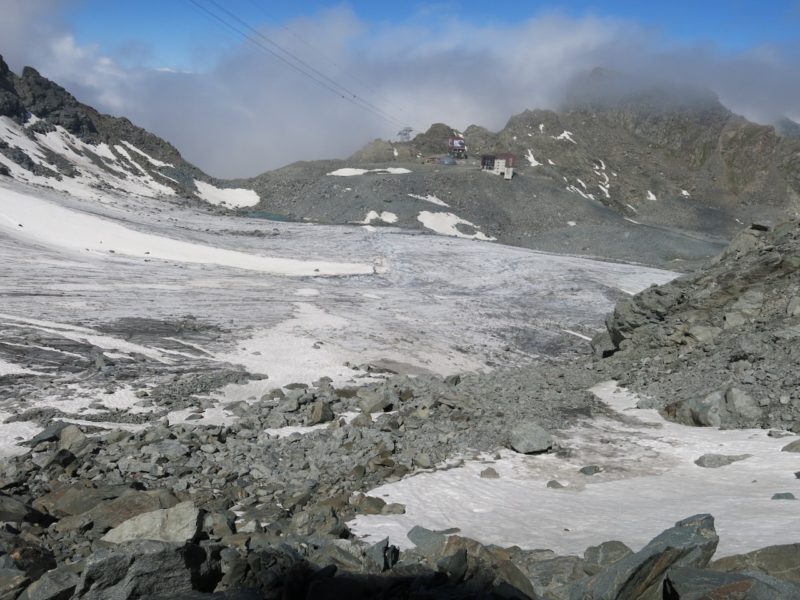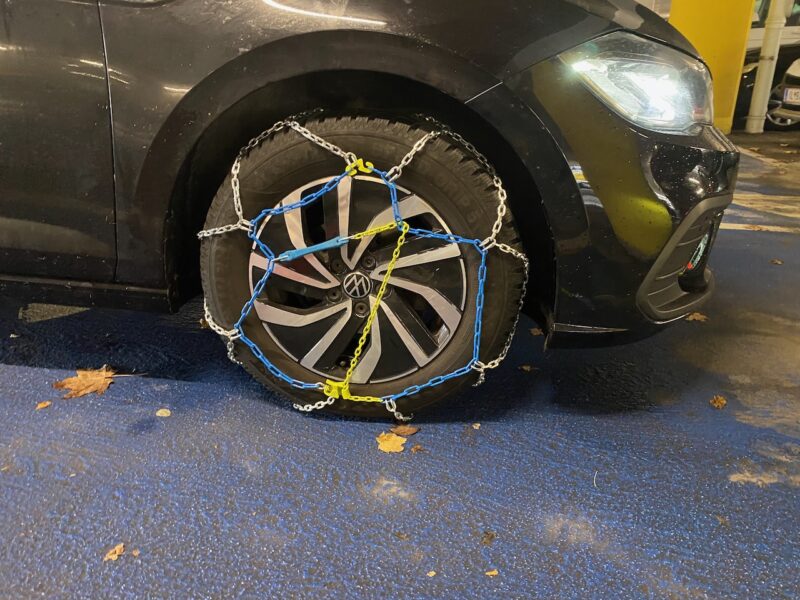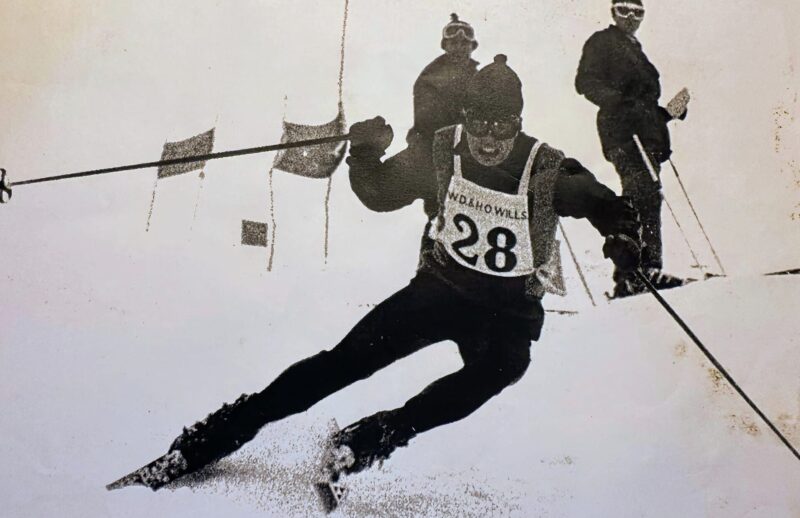STORING SKI KIT OVER THE SUMMER
14th May 2018 | Jane Peel, Chief Reporter
Last modified on August 23rd, 2021
What to do with all your gear now the season is over? Read on for advice on how to ensure it’s in tip-top shape come next winter.
Did you come home from your last trip and stash the skis, snowboards and boots straight in the loft or the garage?
And what about your clothing?
Here’s some help.
SKIS AND SNOWBOARDS
“A few minutes of maintenance is all it takes to ensure years of enjoyment on the slopes,” says Yves Rocquet, a technician for the sports retailer, Decathlon.
“Your ski outfit needs washing before being packed away; similarly, the rest of your equipment also needs attention before being stored for a few months.”

PlanetSKI editor James Cove with his kit
He recommends you first make sure all the components of your skis or snowboard, including the edges, base and bindings are completely dry.
If not, use a soft cloth to dry them and then lubricate the bindings, if necessary.
To prevent the bases from drying out and the edges from rusting, a bit of maintenance is a good idea.
You can do it yourself if you have the kit or take it into Decathlon or your local snowsport store.
If doing it yourself you need to check to see if any sanding or grinding is required, clean the bases and apply a thick layer of storage wax.
Yves Rocquet also says it’s best to store your skis upright and covered and not clipped together.
Ellis Brigham has also produced its own guides to help you look after your hardware, whether or not you choose to take it in to one of its stores for servicing.
One of its technicians, Pete Fletcher, aka “P-Tex Pete”, has produced a series of blogs on the subject:
And, if you think you might sneak off for a summer ski trip or head indoors for some on-snow action…….
Chloe Hardy, a ski instructor for European Snowsport has also written a comprehensive blog on the subject.
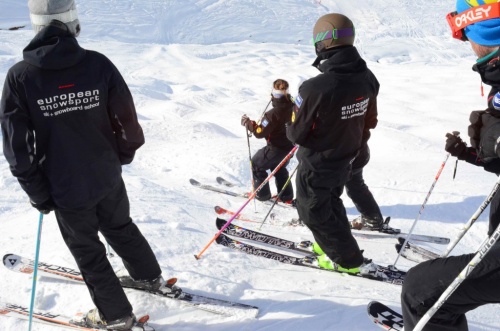
European Snowsport at work. Image © PlanetSKI
“The end of winter is the best time to get any broken parts fixed and check everything is working the way it should,” she says.
“When you’re preparing for your next season or winter holiday you’ll probably have neither the time or the motivation to fix a ripped jacket or a core shot in your skis.”
If you do have any damage, it’s a good idea to get them serviced before putting them away for the summer.
“Get a storage wax – this is the most important aspect of ski storage,” she says.
“A storage wax means applying a generous coat of wax to your skis but not scraping it off, which protects the bases from drying out over the summer months.
“This way your skis will be ready to go next time you need them. All you need to do is scrape the wax off.
“Finally, store your skis somewhere that’s not too cold and damp, but also not too hot and sunny.
“Leaving them in direct sunlight can damage the plastic topsheets, while excess damp and cold can cause the edges and binding components to rust.”
The advice is similar for snowboards.
The Snowboard Asylum, part of Ellis Brigham, offers this advice:
- Dry your snowboard with an old cloth or towel to prevent rusting edges
- Store your snowboard in a temperate, dry place such as at the back of a wardrobe or under the bed rather than in the loft or garage to prevent rusting edges and damp getting into the core
- Apply a medium to thick layer of storage wax over your snowboard ensuring you cover the base edges.
- Unscrew* and remove your snowboarding bindings to maintain the camber (bend) of the board.
*Remember to put the binding screws in a bag and tape them to the snowboard or secure them in a pocket in your snowboard bag if you don’t want to spend hours trying to find them next winter.
Sound obvious?
We know of people (no names mentioned) who have arrived in resort to find some essential hardware missing.
BOOTS
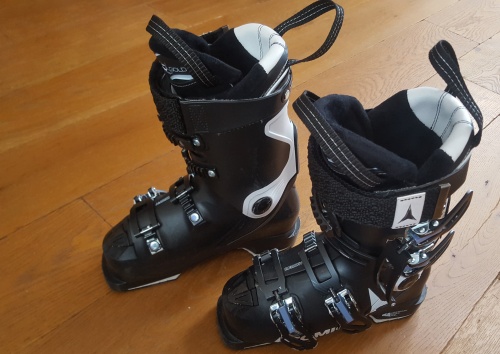
Boots need TLC too
They’ve worked hard and need a bit of tender love and care too.
Yves Rocquet says there are three key things you should do:
- Air your boots. Remove the liner from the plastic outer shell.
- Check the heel and toe units.(Some ski boots have removable plates that can be replaced if they’re too worn)
- Fasten the buckles on first notch to prevent them from becoming misshapen
- Store them, ideally in a bag, in a dry place where the temperature is unlikely to fall below 10°C.
“Your boots are arguably the most important part of your ski set up and it’s essential to the wellbeing of your feet that you store them properly,” says Chloe Hardy.
She says that after airing your boot liners and footbeds you should put them back in the boots, ensuring the tongue is in the correct position before buckling up.
And she has this warning: “Beware leaving your boots too near a direct heat source like a radiator or fire as this can case the materials to degrade or, if your boots have been stretched out, cause the plastic to retract back to its original shape.”
Of course, if you need new boots for next winter, you needn’t throw the old ones out.
They can be put to all sorts of uses…

PlanetSKI chief reporter Jane Peel finds a use for old ski boots. Image © PlanetSKI
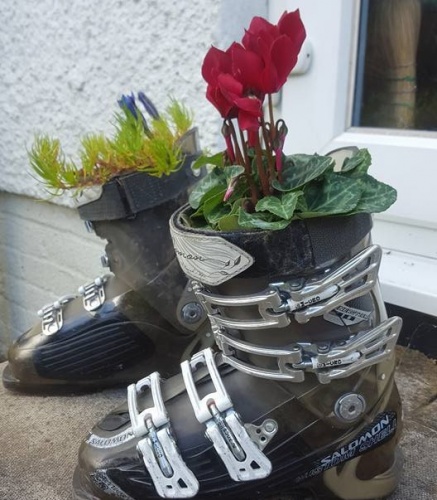
A use for old ski boots. Image © PlanetSKI
We have one other suggestion, though we haven’t personally verified that it works.
A couple of snowboarders we met last winter swear by putting tea bags in their boots.
They do it overnight during the season and say it stops them smelling.
Apparently, it works with any tea bags but peppermint give off a nicer pong.
Er, that’s unused tea bags by the way….
Snowboard boots should also be laced up loosely when not in use to help maintain their shape.
CLOTHING
It’s important to follow the manufacturers’ instructions, especially if you have outerwear made of high-tech Gore-Tex or similar products.
Chloe Hardy at European Snowsport describes in her blog some simple steps. They include:
- Wash them with a small amount of mild liquid, not powder, detergent and don’t use fabric softeners or stain removers.
- Top up the waterproofing, if necessary. Tumble drying on a low setting for around 20 minutes can reactivate it, or buy wash-in proofers.
- Patch up any rips or tears before you forget.
For Chloe Hardy’s comprehensive blog, including further tips about storing your transceiver, googles and other snowsports items, click here.
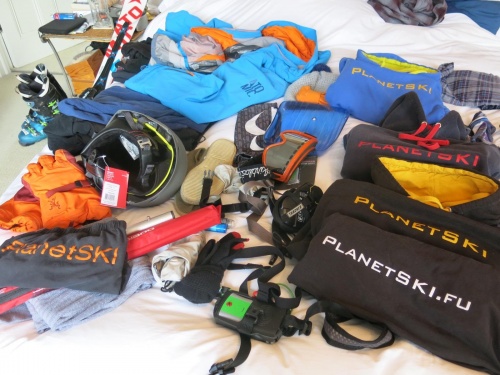
Look after your gear
Have a great summer, everyone. 
See here for the main PlanetSKI news page with all the latest stories from the mountains.
For the Spirit of the Mountains – PlanetSKI: Number 1 for ski news


